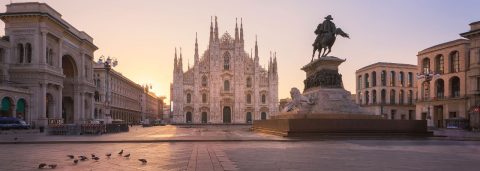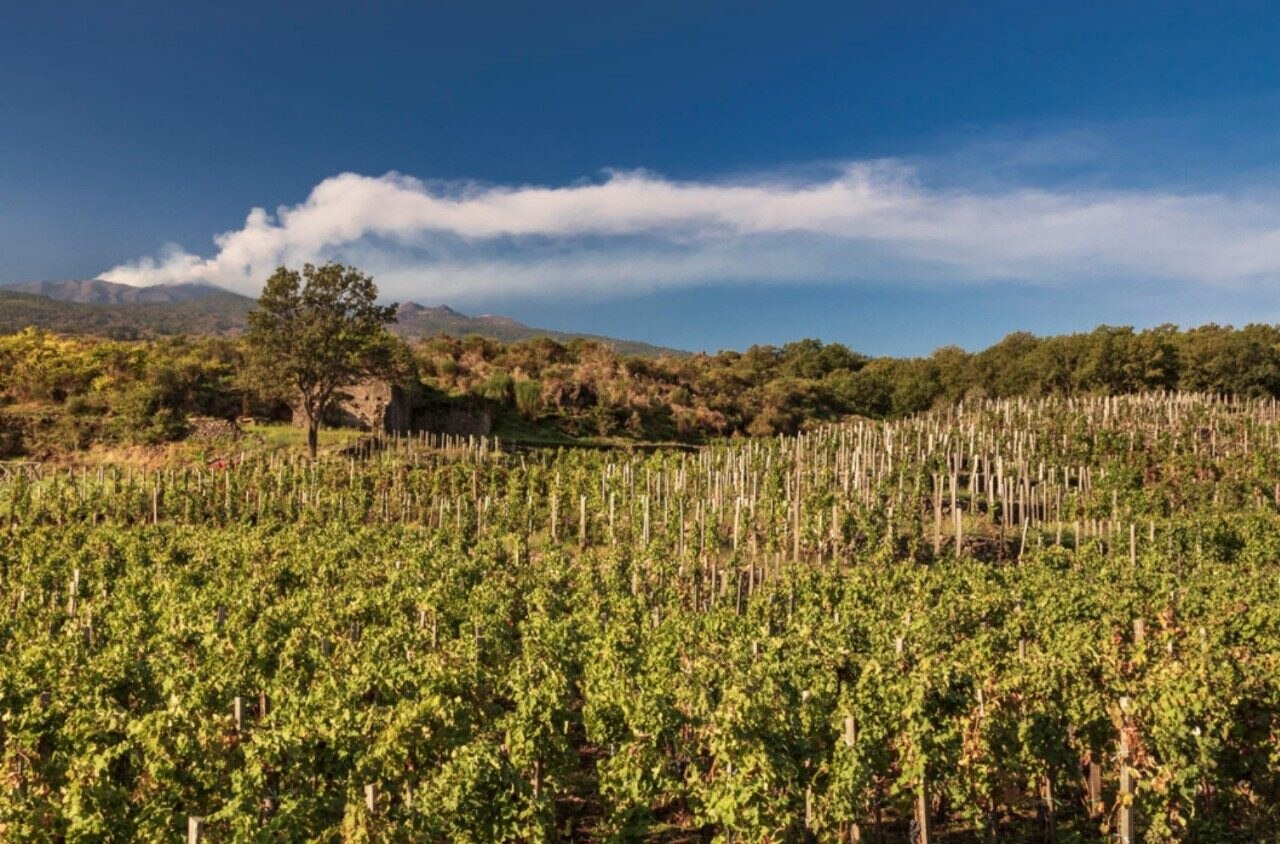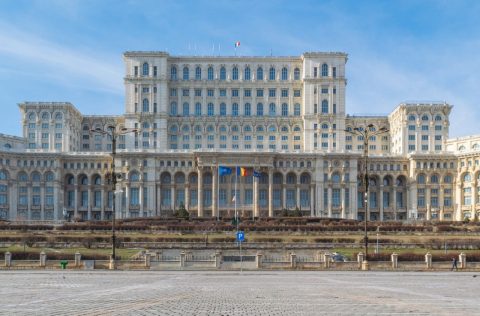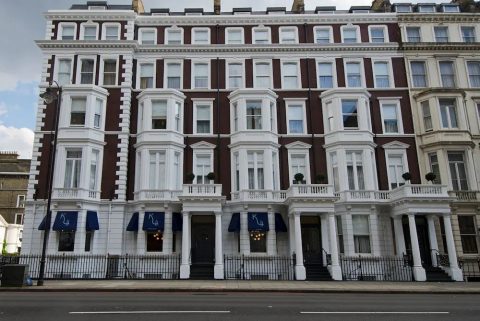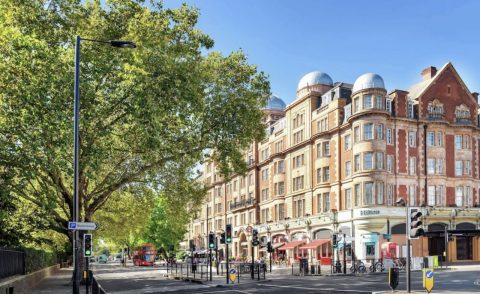50 Magical Sites in Europe You Shouldn’t Miss
From a 13th-century Spanish palace designed to be “paradise on earth” to the kaleidoscopic villages of Cinque Terre in Italy, Europe glitters with historic wonders. And whether it’s your first visit or your fifth, the continent has something to offer every type of traveller. We’ve created the ultimate hit list of magical places to visit on your trip.
Image credit: Getty Images/iStockphoto
Roman Forum, Rome, Italy
1/51What sets these ruins apart from the plethora of ancient wonders in Rome? Firstly, their age: these structures date back more than two millennia. Secondly, the way these excavated temples and arches are clustered together makes it easy to imagine how grand the complex was when the Roman Empire ruled.
Image credit: Roman Babakin - stock.adobe.com
Old Town, Dubrovnik, Croatia
2/51Known as the Pearl of the Adriatic, Dubrovnik’s entire Old Town is UNESCO World Heritage-listed and its steep cobbled streets, Baroque palaces and marble-paved squares are among the prettiest in Europe. Despite a devastating earthquake in 1667 and artillery damage in 1991, the city prevailed – and even gained a new legion of fans starring as King’s Landing in the blockbuster series, Game of Thrones.
Alhambra Palace, Granada, Spain
3/51Alhambra was built by Mohammed ben Al-Ahmar in the mid-13th century, before Ferdinand and Isabella expelled the Moors from Granada in 1492. Successive rulers added to the palace, adhering to a “paradise on earth” architectural philosophy. Wander through tranquil courtyards to the sound of nightingales and trickling water, the perfume of roses filling the air.
Image credit: Getty Images
Westminster Abbey, London, England
4/51It’s difficult to fathom all the events Westminster Abbey has borne witness to since the 13th century – and to comprehend the entities entombed in its walls, floors and sarcophagi. Pay homage to its inhabitants: Mary Queen of Scots and her executioner, Elizabeth I, rest uneasily close; Dickens and Chaucer are in Poet’s Corner; and Stephen Hawking was laid near Isaac Newton.
Image credit: Getty Images
Colosseum, Rome, Italy
5/51The “Flavian Amphitheatre" doesn’t quite have the same ring. Along with its original moniker, the Colosseum changed its purpose constantly throughout its 2000 years. Variously a gladiator battlefield, cemetery, church and simple storehouse, it’s now the most visited attraction in Rome. Book a timed entry in advance to soak up as much of this impressive structure as possible.
Image credit: Getty Images
The Palace of Versailles, Versailles, France
6/51Utter the immortal words, “Let them eat cake!” as you prance through the Hall of Mirrors or explore the Hameau, Marie Antoinette’s private retreat. Versailles was the principal royal residence until the French Revolution – when it was stripped of its furnishings and its inhabitants of their heads. Much has now been restored to its former glory.
Image credit: Getty Images/iStockphoto
Eiffel Tower, Paris, France
7/51The gardens beneath the storied steel structure are set to be transformed, making a visit to this icon even more beautiful. A green corridor running from Place du Trocadero to the Champ de Mars was unveiled in 2023 to provide even more space for travellers to stretch out on the grass surrounding the monument and appreciate its beauty.
Image credit: Getty Images
Parthenon, Athens, Greece
8/51Dominating the Acropolis and indeed the modern skyline is the Parthenon, completed in 438BC and enduring as a symbol of Ancient Greek civilisation. Standing at the foot of the Acropolis, visitors can glimpse the blue Athenian sky through the Parthenon’s Doric columns, a majestic sight that would have been just as arresting eons ago.
Image credit: Getty Images/iStockphoto
Stonehenge, Wiltshire, England
9/51Stop at Stonehenge as part of a daytrip from London to Bath and get the part of your mind dedicated to conspiracy theories working. How did the standing stones get there? Did ancient man really transport them more than 250 kilometres from their original location? Are glacial movements responsible? Aliens? Magic? You decide.
Neuschwanstein Castle, Fussen, Germany
10/51No visit to Europe is complete without seeing a castle. So, why not make it the most famous castle in the world? The inspiration for Disney’s logo truly does look like something out of a fairytale but its history is far from medieval: it was built in the late 19th century for a king who died before its completion.
Image credit: Getty Images/iStockphoto
Leaning Tower of Pisa, Italy
11/51If you don’t have a photo of yourself awkwardly propping up this slanted pile, have you even really been to Italy? Fun photo opps aside, the view of the Arno River and surrounding countryside after ascending the almost 300 marble steps to the top of the tower is stunning.
Image credit: Getty Images
St Basil’s Cathedral, Moscow, Russia
12/51The lolly looking spires make this place of worship one of the most recognisable buildings in all of Russia. But the interior is just as stunning: its walls are adorned with more than 400 beautifully painted religious icons.
Image credit: Getty Images
Trevi Fountain, Rome, Italy
13/51Some say it’s the most beautiful fountain in Rome, others maintain throwing coins into the bubbling waters will ensure, among other things, a return to the Eternal City. But what truly makes the Trevi Fountain stand out is that its grandeur is a surprise after rounding the corner from otherwise nondescript streets.
Image credit: Getty Images/iStockphoto
Notre Dame, Paris, France
14/51After the devastating fire in April 2019 that engulfed the majority of its roof and spire, this grand dame has since been restored and is once again open to the public for admiration. All previously roped-off areas, including its nave, belfry and North and South twin towers have been unveiled and are now open to the public for admiration.
Image credit: Getty Images/iStockphoto
St Peter’s Basilica, Vatican City
15/51Even if you’re not religious, the staggering scale of the home of Catholicism and the chance to appreciate some of the greatest artworks ever created is reason enough to pay this spiritual site a visit. Take in St Peter’s Square and Basilica, and, of course, Michelangelo’s Renaissance masterpiece fresco that graces the ceiling of the famed Sistine Chapel.
Image credit: Getty Images/iStockphoto
Grand Canal, Venice, Italy
16/51This king of canals splits the city in two for almost four kilometres – it’s the reason you come to so many dead ends as you zigzag through Venice’s backstreets. But there are plenty of bridges to trip across that offer vastly different views of the bustle on and alongside the waterway.
Windmills of Mykonos, Greece
17/51Whitewashed windmills are as iconic in Mykonos as the powerfully blue Aegean. Visit Geronymous Mill, the oldest of Mykonos’s windmills, which was producing flour up until the 1960s and still has intact inner workings. Others have been converted into guesthouses so it’s possible to stay in these picturesque reminders of the past.
Image credit: Getty Images
Louvre, Paris, France
18/51Know this: the Mona Lisa is smaller than you anticipate. But the Louvre itself – the palace and the glass pyramid – and the 35,000 other artworks on display within will more than make up for it.
Image credit: Getty Images/iStockphoto
Cinque Terre, Italy
19/51Though not as untouched as they were in the decades before their charm was “discovered” by travellers, the multi-coloured villages of Cinque Terre really are as picturesque as they seem in any photos or films you’ve seen. Visit after summer, when the walking trail that skirts the sea and connects the towns becomes a little less crowded.
Image credit: Getty Images/iStockphoto
The Northern Lights, Iceland
20/51Luck plays a big part in whether you get a mere glimmer of green in the night sky or an all-out spectacle of dancing emerald, pink and yellow lights. Maximise your chances by visiting between September and April and venture out on a clear night with no full moon. The Aurora forecast can guide you.
Image credit: Getty Images/iStockphoto
Brandenburg Gate, Berlin, Germany
21/51Once a symbol of Germany’s division, the Brandenburg Gate is now a beloved marker of its reunification. It serves as the backdrop for scores of important events, including the Berlin Marathon, public viewings of make-or-break football matches and New Year’s Eve fireworks – this is where to go to get a taste of local life.
Image credit: Getty Images
Buckingham Palace, London, England
22/51You can marvel at the façade of the palace anytime of year but you’ll only be permitted inside its hallowed State Rooms from July to August while guided tours are available on select dates through winter and spring.
Image credit: Getty Images
Arc de triomphe, Paris, France
23/51The joy of this attraction lies not in gazing up at it from the ground but from ascending to the top. No less than 12 different roads spin out like a pinwheel from the central point and watching cars, trucks and brave cyclists manoeuvre to their desired exit is endlessly (and heart-stoppingly) entertaining.
Image credit: Getty Images/iStockphoto
Astronomical Clock, Prague, Czech Republic
24/51Plan to spend a while admiring this whimsical piece of medieval history. On the hour, every hour, apostle figures appear at the windows that surround it, Death beckons, a man refuses and a rooster crows. Its dials also track the position of the sun and moon, Bohemian Time daybreak and sunset, and the path of the Zodiac.
Image credit: Getty Images/iStockphoto
Sagrada Família, Barcelona, Spain
25/51Sagrada Família has been a work in progress for more than 135 years. Once you have your ticket, start on the Gaudi-designed side (opposite Placa de Gaudi) and make your way around the church to its opposite edge to see the architecture slowly give way to a more modern style.
Image credit: Getty Images/iStockphoto
Reichstag, Berlin, Germany
26/51If politics is your thing, this building has stood sentinel over all the key moments in the country’s tumultuous history (and still bears marks from some of them). If living history isn’t your idea of a good time, it’s still worth a visit: the panoramic view over Berlin from the rooftop is second to none.
Palace of Pena, Sintra, Portugal
27/51Not far from the bustle of Lisbon is the picturesque, UNESCO World Heritage-listed resort town of Sintra, nestled into the foothills of the Sintra Mountains on the Portuguese Riviera. Generations of royals used it as a summertime escape, as evidenced by its three magnificent palaces including the fairy-tale Pena and the ancient Castle of the Moors.
Image credit: Getty Images
Edinburgh Castle, Scotland
28/51Presiding over the city from Castle Rock, this fortress has been involved in some of Scotland’s most fraught conflicts. The oldest surviving building in the grounds, St Margaret’s Chapel, has stood for almost 900 years – but the volcanic rock on which it’s built had been used by Celtic tribes for millennia prior to that.
Big Ben (Elizabeth Tower), London, England
29/51If a film opens with a black cab cruising past Big Ben, you know you’re in London. Wander past the Houses of Parliament, gaze upon the tower and listen to its familiar toll on the hour, every hour. Aside from some restoration work a few years ago, famously reliable clock has only stopped a few times since 1859 – once, due to a flock of starlings on the minute hand.
Belém Tower, Lisbon, Portugal
30/51On the shores of the Tagus River, this 16th-century fortress is all fenestrations and battlements, executed in the florid Manueline style. Head up to the rooftop terrace to watch the sun set over the river then wander to the namesake neighbourhood’s Pastéis de Belém for Lisbon’s second-sweetest sight: Portuguese tarts.
Vienna State Opera, Vienna, Austria
31/51Mozart, Mahler, Hadyn – they’re just a few of the reasons Austria is one of the best places in the world to see live classical music. The Vienna State Opera (Wiener Staatsoper) building itself is so gilded and opulent that it can be hard to keep your eyes on the action onstage.
Arthur’s Seat, Edinburgh, Scotland
32/51Myths abound about this extinct volcano’s name and its history: some say its moniker is a nod to King Arthur, others argue over whether it was the home of a giant or a sleeping dragon. These rocky bluffs are visible towering above Edinburgh from almost every point in the city. Climb the peak when you first arrive to get your bearings.
Image credit: Getty Images
Tower of London, England
33/51Set on almost five hectares in central London, the Tower was originally a castle. It’s been an armoury, menagerie and the Royal Mint but, most infamously, a prison. Since 1100, it’s held the likes of Anne Boleyn (beheaded in 1536) and the Kray twins (in 1952). Visitors beware – it’s haunted, of course.
Cathedral of Santa Maria del Fiore, Florence, Italy
34/51Known as the Duomo, this church is the most recognisable building in Florence – and its cupola the largest brick dome ever constructed. The first stone was laid in 1296 and much has occurred since, including the Pazzi family attempting to overthrow the ruling Medicis in 1478 by murdering Giuliano de’ Medici and injuring his brother, Lorenzo, during High Mass.
Schönbrunn Palace, Vienna, Austria
35/51The Habsburg dynasty ruled, at times, almost every major kingdom in Europe from the 11th to the 19th century. Schönbrunn Palace was their summer residence, an opulent 1441-room Rococo pile that took its current form during the 1740s. Explore the private rooms of the royals then head outside for its magnificent gardens complete with faux Roman ruins.
Trinity College, Dublin, Ireland
36/51This venerable institution in the centre of Dublin, founded by Elizabeth I in 1592, counts Samuel Beckett and Jonathan Swift among its alumni. See the magnificent 9th-century manuscript The Book of Kells; visit nearby Sweny’s Pharmacy, famous for its appearance in James Joyce’s Ulysses; and marvel at the museum known to students as the Dead Zoo.
Image credit: Getty Images/iStockphoto
Christiansborg Palace, Copenhagen, Denmark
37/51On its own tiny island, Christiansborg Palace is the seat of the Danish Parliament. Visitors can see the current palace’s grand rooms on free guided tours but don’t forget to head underground for the ruins of Bishop Absolon’s Castle that date from 1167.
Buda Palace, Budapest, Hungary
38/51Once the seat of Hungarian kings, Buda Castle now houses the Hungarian National Gallery, the Budapest History Museum and the National Library. Once you’ve explored the museums, the surrounding Várnegyed (Castle Quarter) is full of equally interesting Medieval and Baroque churches, houses and public buildings.
The Church on the Island, Bled, Slovenia
39/51On a speck of land in the middle of teal-hued Lake Bled stands a church with one of the most picturesque outlooks in Europe. There’s evidence that suggests some form of settlement has existed on Bled Island since the 11th century BCE. These days, the best way to reach it is to take a traditional pletna boat (akin to a large gondola) across the water.
Rijkmuseum, Amsterdam, Netherlands
40/51Anyone with even a passing interest in art will have heard of the masterpieces housed in the Rijksmuseum, including Van Gogh’s 1887 Self-portrait, The Night Watch by Rembrandt and The Milkmaid by Vermeer. The current museum was opened in 1885 and houses more than one million objects of art, craft and history.
Hyde Park, London, England
41/51When he wasn’t beheading wives, Henry VIII used Hyde Park as his personal hunting ground. In 1637 it opened to the public, who, for better or worse, made it London’s backyard. Now it’s a serene green space where, when the temperature exceeds 18℃, Brits will sunbake to a rosy hue.
Berlin Wall, Berlin, Germany
42/51Several sections of the demarcation between the former East and West Germany still stand around the city but the must-visit site is the East Side Gallery, now the longest open-air art exhibition in the world.
Tuileries Garden, Paris, France
43/51Named for the tile industry that operated here, the Tuileries is between the Louvre and the Place de la Concorde. It was created for Catherine de’ Medici in 1564 and enjoyed by a young Louis XIII as a playground, complete with menagerie. It became a public park after the French Revolution and a prime place for flânerie and people-watching.
Hagia Sophia, Istanbul, Turkey
44/51Istanbul’s most recognisable landmark, the Hagia Sophia began life in the 6th century and took five years to construct. It was originally an Eastern Orthodox cathedral before becoming a mosque under the Ottomans, a museum in 1935 and finally, in 2020, a mosque again. The Byzantine structure is an architectural marvel, having withstood hundreds of earthquakes during its almost 1500-year history.
Hadrian’s Wall, England
45/51There it is, evidence of Britain’s Roman past lying in a field open to the elements. But that’s not surprising, given that Hadrian’s Wall stretches for 117 kilometres from coast to coast and has stood since 122 CE. The defensive fortification built by the Emperor Hadrian now has a National Trail footpath following its route from Wallsend to Bowness-on-Solway and even inspired The Wall in Game of Thrones.
Image credit: Getty Images
Guggenheim Bilbao, Bilbao, Spain
46/51The extraordinary Guggenheim building alone is reason enough for a visit to the northern Spanish city of Bilbao, let alone the treasures found inside. The curved-metal Frank Gehry design is considered an architectural feat making it a worthy home for works such as Jeff Koons’ Puppy and Louise Bourgeois’ Maman.
Pantheon, Rome, Italy
47/51Completed between 113 and 125 CE during the reign of Hadrian, the Pantheon is a former Roman temple and now a remarkably preserved church. Gaze up at the sky through the oculus in the dome, like millions of others have done over almost 2000 years, and contemplate the passing of time.
Image credit: Getty Images
Hofbräuhaus, Munich, Germany
48/51Microbreweries might be having a moment but if you’re going to drink a tankard in Germany, this is the place to do it. It’s an institution: not only has it played a key role in the history of German politics and beer brewing, it also has its own currency and a popular tune written about it. Prost!
Tate Modern, London, England
49/51The privately owned Tate Modern serves as Britain’s custodian of modern and contemporary art. It was opened in 2000 in the Bankside neighbourhood in a former power station. Now welcoming millions of visitors a year, its collection includes pieces by Picasso, Damien Hirst and Henry Moore.
Grand Bazaar, Istanbul, Turkey
50/51Bargaining for a carpet at the Grand Bazaar is a quintessential Istanbul experience. First opened in 1455 and famed as one of the world’s first shopping malls (but bearing no resemblance to a Westfield), this immense covered market is made up of 61 streets and more than 4000 shops.
